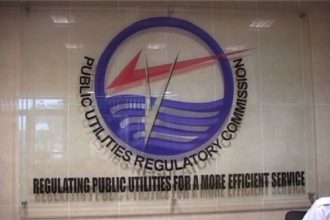Around the World, Energy from Solar sources is being promoted for very good reasons. As far as environmental desirability and impacts are concerned, solar is about as good as it gets and is only getting better as sophistication of design and project development improves.
As the solar revolution catches up, many models are being developed to ramp up adoption of the technology. While solar energy is generally considered a clean and sustainable source of power, there are concerns of some negative environmental implications associated with the disposal or management of solar scraps after their lifespan.
Life Cycle Considerations
For every item including solar panels, the following are basic aspects of their “life cycle” that one ought to examine in determining environmental impacts/desirability or otherwise.
- Primary extraction & refining of the materials that go into its production, and the effect thereof on the land (hereafter “land use”) from which these items came;
- Manufacturing process of the component materials AND the manufacturing of the item itself:
- Energy and materials consumed during the process of manufacturing, and wastes created, esp. hazardous wastes;
- Energy and materials that go into installing it and making it operational, again also land use;
- Water used or consumed in production and operation. This is really, really important as water is a basic unit of life;
- Air emission impacts, other waste produced, especially hazardous, or worse, radiological.
- Labor required in operation including transportation impacts of commuting and deliveries of materials and fuel
- Decommissioning & reuse of site and materials, also ease of recycling and “disposal” of unrecyclable materials
- Effects on local weather or ecosystems at any point of the above lifecycle stages.
A comprehensive checklist of the entire life cycle considerations for any single item may fill up a whole book. However, we shall discuss solar panels against the checklist in this article. This is not an attempt to downplay the importance of solar power or clean energy generation in our quest to transition from dirty to clean energy production. This is rather a call for a focused discussion of the potential environmental disaster if we fail to put in place the right measures.
Upsides of Solar Technology
A solar panel is (typically) a lamination of several materials created using mild heat and vacuum (to get rid of air bubbles) in a large press – think of it as a panini sandwich that makes electricity in sunlight. Importantly, it has no moving parts and uses no water in operation, nor any fuel requiring fuel delivery, nor any disposal of waste material while operating.
Manufacturing, installing and maintaining solar panels creates good long-term skilled jobs and creates a power source that will last at least a couple of decades—probably three decades. The energy and resource use that goes into solar panels is “paid back” quickly by the power production. After the payback period, power produced subsequently is essentially free—it costs no money, creates no pollution, involves no labour (except for minor maintenance for solar thermal panels), and no resources. All this is true for both solar electric and solar thermal panels (that make heat and hot water). Solar panels on rooftops are using space that was unused and are supplying power into the home and grid at multiple locations near loads thus saving transmission costs and losses. Solar PVs are crucial in the energy transition discussion, playing an important role in reducing carbon emissions. With all the positives things about solar PVs, it is probably preposterous for anyone to be thinking of any reasons why solar PVs should be of any concerns to us at least from the environment point of view.
Recycling Concerns
In Ghana and most developing countries, the adoption of solar PVs is on the increase rapidly especially as the price of the PVs keep dropping sharply. Following international trends, in the last three years, solar power in Ghana attracted more investment than any other power technology. The National Energy Policy is supplemented by the investment-focused Renewable Energy Master Plan, which aims to increase Ghana’s renewable energy installed capacity to approximately 2,500 MW by 2030. These policy objectives are given legal basis by the Renewable Energy Act, 2011 (Act 832).
According to the Energy Statics report published by the Energy Commission in 2021, the total installed capacity of Solar is 144MW as of 2020. So, if you count the panels on both rooftops and solar farms, there could be as many as 331,000 solar panels currently in Ghana. The big environmental concern with this statistic is, what happens to all these panels which are fast increasing in number when they have reached the end of their lifespan? The infrastructure for recycling these panels is non-existent. Even in advanced countries the attempts to recycle solar equipment are at their embryonic stages. If these embryonic recycling attempts do not reach proof of concept and subsequently scaled up ahead of the lifespan of these panels, we may be setting up ourselves for another big environmental concern even at the global level. “It’s going to be a waste mountain by 2050, unless we get recycling chains going now,” says Ute Collier, deputy director of the International Renewable Energy Agency. “We’re producing more and more solar panels – which is great – but how are we going to deal with the waste?” she asks.
Our governments must be aware of this and prepare mitigation plans ahead of time. From all indications, the rate of installation of new panels will increase astronomically in Ghana. This means that soon, there will be a huge mountain of solar scrap to deal with.

Raymond Ategbi Okrofu is a Managing Consultant -The Environment Sustainability Nexus.
The Environmental Implications
How dangerous are solar scrap to the environment? are they just environmental nuisance or they pose real risks to the ecosystem.?
Apart from the bulky nature of the panels which means the scrap will consume a lot of landfill space, the components of the panels can also pose severe risks to flora and fauna.
Hazardous Materials: Solar panels contain certain hazardous materials such as lead, cadmium, and other toxic substances. Improper handling or disposal of these materials can pose risks to the environment and human health if they leak into the soil or water sources.
E-Waste Concerns: Solar panels are classified as electronic waste (e-waste) when they reach the end of their life cycle. Improper disposal or inadequate recycling of solar panels can contribute to the growing e-waste problem, as they contain various electronic components that may release harmful chemicals if not properly managed.
Landfill Space: If solar panels are not recycled or disposed of properly, they can end up in landfills, occupying significant spaces. This can contribute to the depletion of valuable landfill capacity and may potentially lead to the release of hazardous substances over time.
Resource Consumption: The manufacturing of solar panels requires the extraction and processing of raw materials such as silicon, glass, and metals. The extraction and processing of these materials can have adverse environmental impacts, including habitat destruction, energy consumption, and carbon emissions.
Recycling Challenges: Solar panel recycling is a relatively new and developing industry. Currently, there are challenges in terms of the cost-effectiveness and efficiency of recycling methods, which can result in a lower recycling rate. This means that a significant portion of end-of-life solar panels may not be properly recycled, leading to environmental concerns.
To mitigate these negative environmental implications, it is important to promote responsible and sustainable practices throughout the lifecycle of solar panels. This includes implementing proper recycling programs, encouraging the development of efficient and cost-effective recycling technologies, and raising awareness about the environmental impacts of improper disposal or management of solar scraps.
Among the reasons why there are few (or rather, no commercially viable) facilities for recycling solar panels is the fact there has not been much waste to process and reuse until recently.
The first generation of domestic solar panels are only now coming to the end of their usable lives. With those units now approaching retirement, experts say urgent action is needed. “There can’t be a better time to think about this than NOW”
Indeed, now is the time to start thinking about this. Will Ghana take advantage and invest in targeted research and eventually develop a solar scrap recycling facility and serve as a hub for handling solar waste in the sub region?
Below are a few suggested measures that our goverments must begin to consider strongly as we promote the deloyment of clean energy especially solar photovolaic.
- Extended Producer Responsibility (EPR): Make manufacturers responsible for the waste generated by their products, encouraging them to design sustainable products and recycling strategies. This is a measure that is adopted in managing waste in some sectors such as plastics and harzaduouse wastes. Same can be applied in this sector.
- Recycling Infrastructure: Ghana must begin to invest in the establishment of dedicated recycling facilities for solar panels and other solar equipment, ensuring efficient and environmentally friendly processing. This will eventually pay off and the waste volumes increases. The environmental consequences of mismanaging the solar waste could be problematic for the nation.
- Collection and Take-Back Programs: Implement collection schemes and take-back programs for end-of-life solar panels, making it easy for consumers and installers to return them for recycling. As easy as this may sound, if it not backed by lesgislation and/or incentives it may never work as it has failed in many other sectors such as plastics and glass bottles. The energy to drive sucha concept is “incentives”
- Regulatory Frameworks: Develop and enforce regulations governing the disposal and recycling of solar waste, setting standards for environmentally responsible practices. I agree that regulations in and of themselves do not work well unless they backed by appropriate enforcement mechanisms.
- Research and Development Funding: Ghana must support innovation in solar panel recycling technologies and sustainable materials, driving the development of closed-loop recycling and circular economy solutions. We must resource our reserch institutions such Council for Scientific and Industrial Research (CSIR) and the universities to begin to focus research pinholes in areas such management of solar scraps.
- Education and Awareness: Another soft and important activitiy is the promotion of public awareness about the importance of responsible solar waste management, encouraging stakeholders to prioritize sustainability.
- Collaboration and Partnerships: Foster industry partnerships and international cooperation to share best practices, develop global standards, and address the growing issue of solar waste.
- Design for Recyclability: Encourage manufacturers to design solar panels with recyclability in mind, using modular designs and recyclable materials.
- Waste Management Guidelines: Develop and disseminate guidelines for the safe handling, storage, and transportation of solar waste, minimizing environmental impacts.
- Incentives and Tax Credits: I have mentioned earlier, but for emphasis, we need to have syste to offer incentives and tax credits to companies investing in solar recycling infrastructure and sustainable practices, driving market growth and adoption.
These are measures if well implemented and coordinated will define our rediness for a widespresd deployment of solar resources.
In conclusion, while we should all join in promoting the solar revolution for its benefits in terms of cost and the production of clean energy, we must be aware that solar scraps also have the potential to harm the environment. However, there are a number of things that can be done to mitigate these negative impacts. By recycling, reusing, and designing for sustainability, we can help to reduce the environmental impact of solar scraps.
Authored by: Raymond Ategbi Okrofu ,Managing Consultant -The Environment Sustainability Nexus.












